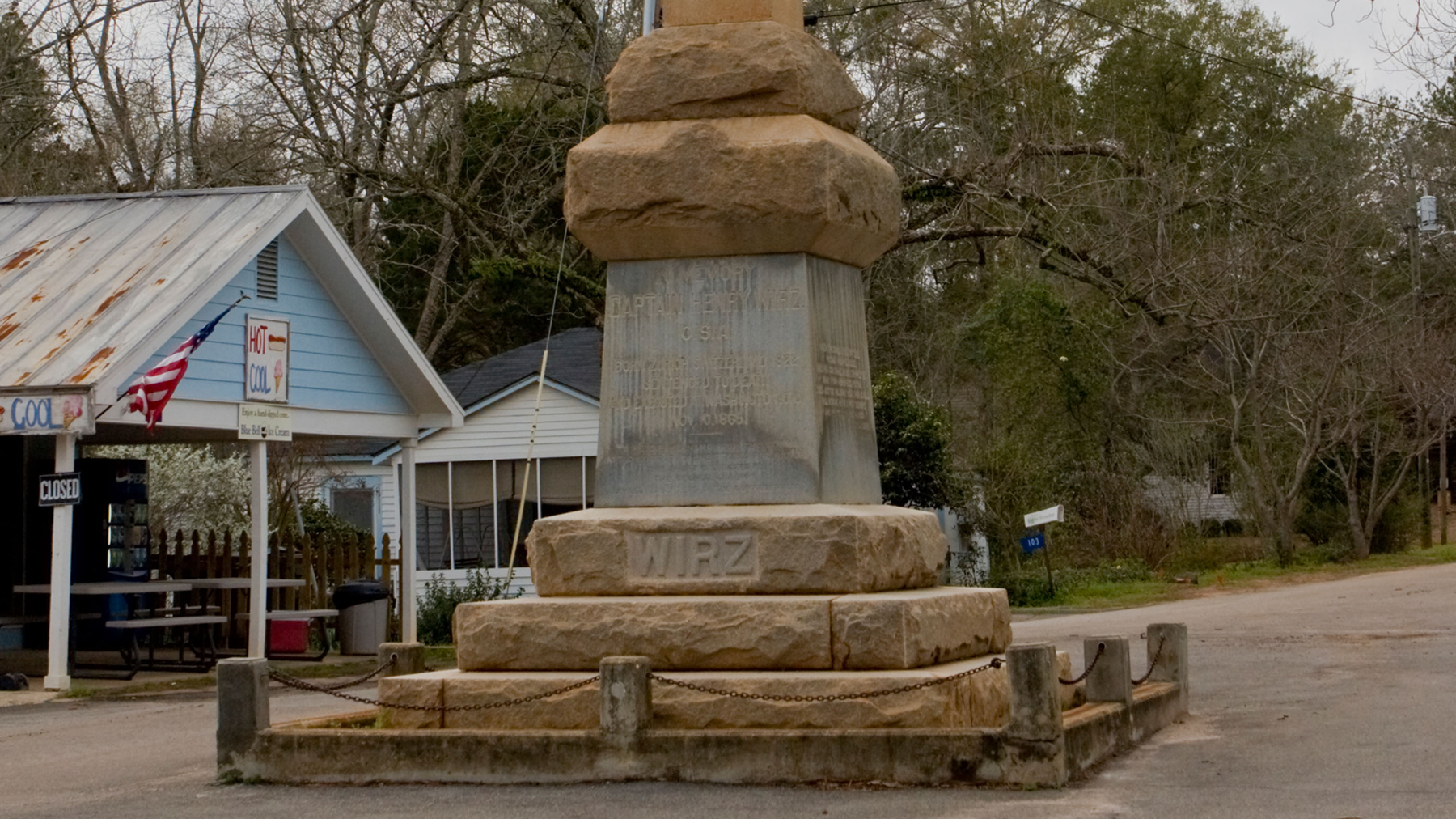We’ve seen the monuments to Jefferson Davis. We’ve seen the ones to Robert E. Lee. But why is there a monument to a Confederate captain executed for war crimes?
Captain Henry Wirz took command of a Confederate prisoner-of-war camp in Andersonville, Georgia, in 1864. The camp was originally intended to be a temporary holding pen for prisoners who would be exchanged with the Union. It was nothing more than an open-air stockade.
But within six months of its establishment, Camp Sumter was holding 32,000 Union soldiers. Technically, it was the fifth largest city in the Confederacy.
Inside, the situation was dire. There was no potable water. The Union prisoners were never issued clothing, so they wore their ragged uniforms until the pieces fell off their bodies. Men lived in holes they dug in the ground. One soldier reportedly used a pocket knife to amputate his own gangrenous feet.
In just over a year, the death toll reached 13,000. That’s over a quarter of all the men incarcerated in Camp Sumter. And the man who presided over their deaths: Captain Henry Wirz.
By the time he was put on trial for war crimes in May 1865, Wirz was the “second-most hated man in America,” according to Greg Bailey’s piece on the anniversary of Wirz’s execution. As Bailey wrote for The New Republic:
No Civil War prisoner of war camps, North or South, were country clubs. … But no prison approached the death rate or deliberate cruelty of [Camp Sumter in] Andersonville. After the surrender at Appomattox, stories of survivors began flooding the Northern newspapers. The photographs of the survivors, starved into living skeletons, were like nothing the world had seen before and would not see again until the liberation of Nazi death camps at the end of World War II.
Wirz was found guilty of 13 acts of personal cruelty, including shooting, beating, and turning dogs loose on prisoners. In his closing statement at the trial, the prosecutor declared:
His work of death seems to have been a saturnalia of enjoyment for [Wirz], who amid these savage orgies evidenced such exultation and mingled with them such nameless blasphemy and ribald jest, as at times to exhibit him rather as a demon than a man.
So why erect a 24-foot monument — barely a mile from Camp Sumter — to “a demon?”
The answer lies in the Confederate campaign that sought almost immediately after Wirz’s execution to recast him as a martyr. The United Daughters of the Confederacy erected a monument to Wirz in 1909, the group said, “to rescue his name from the stigma attached to it by embittered prejudice.”
Dozens of local and state governments have responded to community pressure to take down Confederate monuments. Andersonville, Georgia, isn’t one of them.
We released a report this week tallying the many public tributes to the Confederacy that still stand: 115 in Georgia alone.
Wirz’s monument is one of them.
The Editors
P.S. Here are other pieces we think are valuable this week:
- In the army and the Klan, he hated Muslims by Steve Hendrix for The Washington Post
- The tragic story of Sarah Baartman and the enduring objectification of black women by Natasha Mwansa for The Establishment
- Thinning safety nets and the closure of Atlanta’s homeless shelters by Gabrielle Hernandez for Scalawag
- It’s worse than murder: how rural America became a hospital desert by Michael Graff for The Guardian



